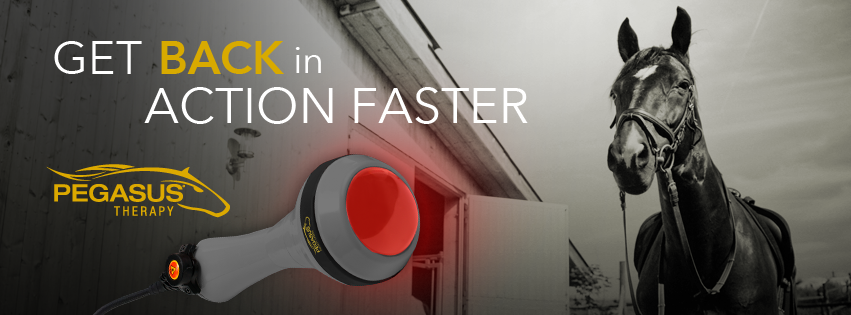Equine Therapy for Trauma Healing: How Equines Help Heal Emotional Wounds
Equine Therapy for Trauma Healing: How Equines Help Heal Emotional Wounds
Blog Article
How Laser Therapy in Equine Therapy Is Changing Vet Take Care Of Horses
Laser treatment has arised as a transformative technique in equine veterinary treatment, supplying a non-invasive remedy that speeds up healing and boosts overall health. Leveraging accurate light wavelengths, this innovative therapy stimulates mobile regrowth, minimizes inflammation, and alleviates pain. Its efficacy expands from bone and joint injuries to persistent ailments like osteoarthritis, significantly improving mobility and life top quality for equines. The mobility and adaptability of laser therapy devices additionally emphasize their growing indispensability amongst vets. As we discover the detailed technicians and real-world successes, the extensive influence on equine medical practices ends up being increasingly noticeable.
Comprehending Laser Treatment

The modern technology behind laser treatment is based in the concept of photochemistry, where photons are soaked up by chromophores within cells, bring about raised ATP manufacturing and inflection of responsive oxygen varieties (Equine Therapy). This, subsequently, promotes cellular proliferation, minimizes swelling, and accelerates healing. Vet specialists make use of various sorts of lasers, including low-level lasers (LLLT) and high-power Class IV lasers, depending upon the particular therapeutic goals and the nature of the equine condition being dealt with
Different laser wavelengths and power setups are carefully picked to target different cells depths and achieve desired scientific end results. Safety protocols are paramount, as improper use can bring about thermal damage or suboptimal therapeutic impacts. Therefore, an extensive understanding of laser therapy's systems and applications is critical for its efficient implementation in equine veterinary practice.
Benefits for Equine Health And Wellness
The myriad benefits of laser therapy for equine wellness encompass boosted recovery, pain reduction, and improved mobility. This sophisticated treatment method leverages specific wavelengths of light to penetrate cells, boosting cellular function and promoting fast cells repair service. The non-invasive nature of laser therapy guarantees marginal tension and discomfort for the steed, helping with a smoother recuperation procedure.
Enhanced healing is just one of the leading benefits, as laser treatment speeds up cellular regeneration and collagen synthesis. This brings about quicker healing times from injuries and surgeries. Discomfort decrease is achieved via the anti-inflammatory effects of laser treatment, which lowers swelling and lowers the manufacturing of pain-inducing chemicals. Therefore, equines experience substantial remedy for chronic and intense discomfort conditions.
By decreasing swelling and discomfort, and enhancing cells repair work, laser treatment assists in bring back joint feature and muscle flexibility. Therefore, laser treatment stands as a transformative device in contemporary equine vet care.
Typical Conditions Treated
Laser therapy has actually become a flexible treatment choice for a variety of typical equine problems. Amongst these, bone and joint injuries are specifically responsive to laser therapy. Equine Therapy. Soft cells injuries, such as tendonitis and ligament stress, take advantage of the anti-inflammatory and analgesic impacts of laser treatments, which accelerate recovery and reduce discomfort. In addition, laser therapy works for problems like osteoarthritis, where it helps mitigate joint swelling and advertise tissue fixing.
Wound management is one more location where laser therapy has actually shown significant promise. Chronic wounds or slow-healing ulcers can be particularly challenging in steeds, but laser treatment enhances cellular regrowth and improves blood flow, therefore accelerating the healing procedure. In addition, laser therapies have actually been effectively used in handling hoof conditions such as laminitis and abscesses, easing pain and advertising much faster healing.

Modern Technology Behind Laser Therapy
Past the myriad problems treatable with laser treatment, the technology itself benefits better assessment. At the heart of laser treatment is the usage of particular wavelengths of light to permeate tissues and evoke biological feedbacks. These wavelengths, normally ranging from 600 to 1000 nanometers, are precisely absorbed by chromophores in the skin, muscular tissue, and various other cells, prompting a cascade of mobile events.
Laser gadgets used in vet medicine typically utilize low-level laser therapy (LLLT) or cool laser treatment. Unlike high-powered medical lasers, these tools operate at lower power degrees, maximizing restorative advantages while reducing thermal damages. The power from the laser light promotes adenosine triphosphate (ATP) manufacturing, boosts cellular metabolic rate, and accelerates tissue fixing procedures.

Success Stories and Situation Studies

Showcasing the substantial advantages of laser treatment, various success stories and situation research studies brighten its transformative influence on equine wellness. One such case involves a pureblood racehorse struggling with chronic tendonitis. Standard therapies generated marginal enhancement, yet after incorporating laser treatment into the program, the horse exhibited considerable reductions in inflammation and discomfort within weeks, eventually returning to competitive racing.
An additional compelling instance features a dressage horse identified with extreme pain in the back, limiting its performance. A vet team utilized low-level laser therapy (LLLT) to target the irritated areas, leading to marked improvement in adaptability and a notable decrease in pain. Over several sessions, the equine regained its peak type, showcasing the efficacy of laser therapy in addressing bone and joint problems.
Furthermore, a research conducted at a leading equine clinic checked out 50 steeds with various soft cells injuries treated with laser therapy. The outcomes stood out: 85% of the equines demonstrated increased recovery times and enhanced flexibility. These cases underscore the adaptability and efficiency of laser therapy in equine medicine, supplying a non-invasive, scientifically-backed technique to enhancing healing and performance in horses.
Conclusion
Laser treatment click for more info is changing equine vet care by providing a non-invasive therapy that increases recovery, decreases swelling, and reduces pain. With its performance in dealing with a variety of conditions, from bone and joint injuries to chronic conditions like osteoarthritis, this modern technology considerably improves equine health and wheelchair. The transportability and versatility of laser therapy further underscore its transformative effect on veterinary practices, solidifying its duty as an essential device in contemporary equine medical care.
Report this page